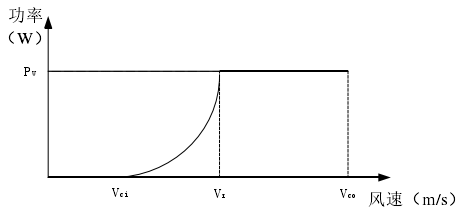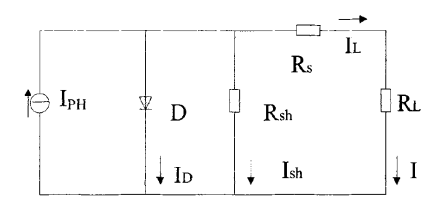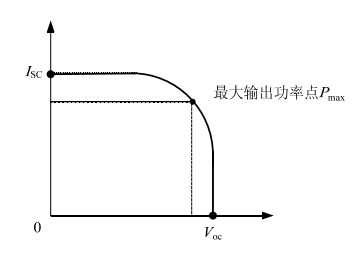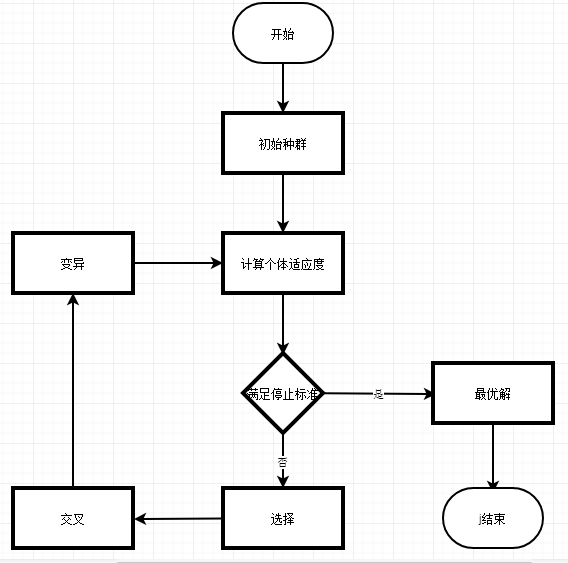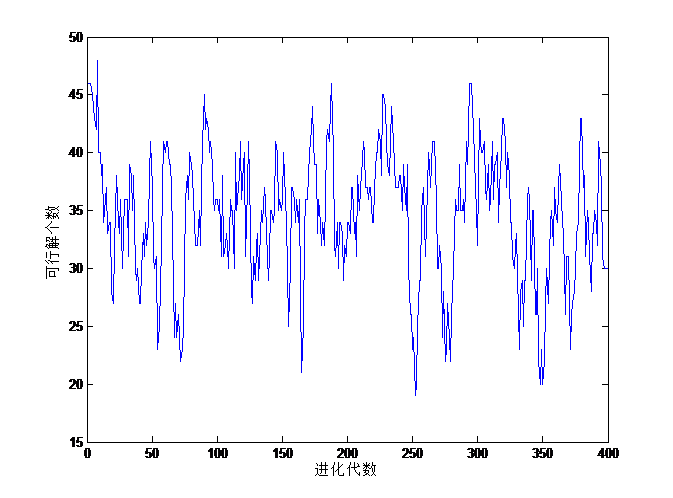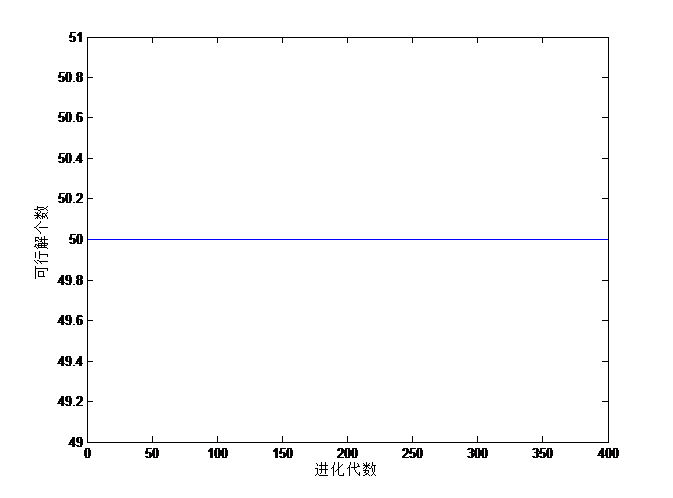基于清洁能源的船舶发电系统优化配置研究毕业论文
2020-04-11 17:37:22
摘 要
为了实现船舶航运业的节能减排,基于清洁能源的船舶发电系统受到了工业界和学术界的广泛关注。风能和太阳能是天然的清洁能源,如果利用风光发电,对风力机、光伏电池、蓄电池和柴油机进行合理配置来供给船舶的电力,这对节能减排有着重大的意义。本文提出了具体的研究对象,即对停泊在港口的小型趸船的混合发电系统优化配置进行研究,建立风力发电机、光伏电池、蓄电池和柴油机的混合发电系统数学模型,运用改进的遗传算法,以系统的总成本最小为目的,系统的供电可靠性为约束条件对所建立的优化配置数学模型求解,最后在MATLAB里进行仿真结果分析。具体内容如下:
首先,介绍了我国能源的现状和危机,也介绍了清洁能源的现状及其应用前景,从而体现出我国对于清洁能源的开发利用的重要意义。也着重阐述了船舶上清洁能源发电并供给船舶电力的国内外实例,同时也对优化配置研究的国内外现状展开描述。
其次,介绍了风力机的发电原理,画出了风力机的功率特性曲线,也列出了风力发电机功率和风速的相关公式;同时介绍了光伏电池的伏安特性和它的等效电路及其功率输出模型;也对蓄电池进行阐述,列出了它的重要物理量和它的荷电状态计算公式;对船舶柴油发电机进行简单描述。
再次,根据前面所建立的系统各部件的数学模型,建立决策向量,其包括风力发电机、光伏电池、蓄电池、柴油机、逆变器的数量以及风机的高度。以系统的总运行成本(包括购买成本、维护成本、安装成本)为目标函数,建立能量约束、系统各部件数量约束、船舶失负荷概率约束条件,并根据了经典遗传算法的定义,指出其不足之处,即处理这种单目标多约束条件的问题比较复杂且不可靠,从而提出了基于约束分级的改进遗传算法策略,并使用此改进的遗传算法对目标函数进行求解。
最后,在MATLAB里编写程序来实现对该船舶混合发电系统的优化配置模型进行仿真,并把当地一天24小时的风速、光辐射量、温度以及趸船停泊在港口时的典型日常负载带入其中。对两种算法的可行解、收敛次数、运行时间以及最优配置成本进行分析,验证了该改进遗传算法的可行性。并得到趋于最优系统运行总成本,以及各系统部件的优化配置的解。
关键词:清洁能源、混合发电、优化配置、遗传算法
Abstract
In order to achieve energy-saving and emission reduction in the ship shipping industry, ship-based power generation systems based on clean energy have received extensive attention from the industry and academia. Wind energy and solar energy are natural clean energy. If wind power is used to generate electricity, rational allocation of wind turbines, photovoltaic cells, storage batteries, and diesel engines to supply the ship's electricity will be of great significance for energy conservation and emission reduction. This article proposes a specific research object, that is, research on the optimal configuration of the hybrid power generation system for small-scale barges berthed at the port, the establishment of a hybrid power system mathematical model of wind turbines, photovoltaic cells, batteries and diesel engines, and the use of improved genetic algorithms to The total cost of the system is the minimum. The power supply reliability of the system is the constraint condition to solve the mathematical model of the optimized configuration. Finally, the simulation results are analyzed in MATLAB. The details are as follows:
First of all, it introduced the current situation and crisis of China's energy, and also introduced the current status of clean energy and its application prospects, thus reflecting the significance of China's development and utilization of clean energy. It also focuses on domestic and foreign examples of clean energy generation on ships and supply of ship power, and also describes the current situation at home and abroad for research on optimal allocation.
Secondly, the principle of power generation of wind turbines was introduced, the power characteristics curve of wind turbines was drawn, and the formulas related to wind turbine power and wind speed were also listed. At the same time, the volt-ampere characteristics of photovoltaic cells and its equivalent circuit were introduced. The power output model; also expounded the battery, listed its important physical quantity and its charge state calculation formula; a simple description of the ship diesel generator.
Again, based on the previously established mathematical model of the various components of the system, a decision vector is established that includes the number of wind turbines, photovoltaic cells, batteries, diesel engines, inverters, and the height of the wind turbine. Taking the total operating cost of the system (including purchase cost, maintenance cost, and installation cost) as the objective function, the energy constraints, constraints on the number of parts of the system, and the constraints on the probability of loss of the ship are established. According to the definition of the classical genetic algorithm, the deficiency is pointed out. At the same time, the problem of dealing with such a single-objective multi-constraint condition is complex and unreliable. Thus, an improved genetic algorithm strategy based on constraint hierarchy is proposed, and the objective function is solved using this improved genetic algorithm.
Finally, a program was written in MATLAB to simulate the optimal deployment model of the ship's hybrid power system, and to bring in the local day-to-day wind speed, light radiation, temperature, and typical daily load when the barge was berthed at the port. The feasible solution, convergence times, running time and optimal configuration cost of the two algorithms are analyzed to verify the feasibility of the improved genetic algorithm. And get the solution to the optimal system operation total cost, and the optimal configuration of each system component.
Keywords: clean energy, hybrid power generation, optimal configuration, genetic algorithm
目 录
摘 要 I
Abstract II
第1章 绪论 1
1.1课题研究背景及意义 1
1.1.1我国能源的现状及清洁能源的应用 1
1.1.2风光互补发电的应用及优势 3
1.1.3船舶应用风光互补发电的优势 4
1.1.4清洁能源发电的应用现状 5
1.1.5清洁能源在船舶行业应用现状 6
1.2课题国内外研究现状 7
1.3本文研究内容 8
第2章 系统各个部件的特性及数学模型 10
2.1风力发电特性及其建模 10
2.1.1风资源介绍 11
2.1.2 风力机转轴风速的建模 12
2.2 光伏电池特性及建模 12
2.2.1 光伏电池等效电路分析 13
2.2.2光伏电池功率输出建模 14
2.3蓄电池介绍 15
2.4 柴油发电机 15
2.5本章小结 15
第3章 基于约束分级的改进遗传算法优化配置 16
3.1遗传算法简介 16
3.2改进遗传算法 17
3.3基于清洁能源的船舶发电系统优化配置 18
3.3.1决策向量 18
3.3.2目标函数 19
3.3.3约束条件 19
3.4 优化配置处理过程 20
3.5本章小结 20
第4章 基于MATLAB的优化配置仿真 21
4.1风光资源及负载数据 21
4.2混合发电系统部件选型 22
4.3 MATLAB程序编写 22
4.4仿真结果分析 24
4.5本章总结 27
第5章 总结与展望 28
参考文献 29
致谢 31
第1章 绪论
在研究基于清洁能源的船舶发电系统优化配置前,首先分析了目前的研究背景,其次介绍了其进行此研究的意义,也阐述了其他人是如何对此课题进行研究的,从而引出本论文的具体研究内容。
1.1课题研究背景及意义
1.1.1我国能源的现状及清洁能源的应用
能源是人类生存的必备物质,人类的生存与发展绝对离不开能源[1]。长期稳定的能源供应也是一个国家经济发展、社会稳定和国家安全的重要保证。自1970年石油危机爆发之后,能源就成为了世界各国焦点中心[2]。自改革开放以来,我国经济的快速增长、城市化的进程速度加快以及国家的重工业化导致我国对于能源的需求日益增长,并且处于快速增长的阶段。上世纪90年代开始,我国能源就已经供不应求了,随着国家不断地发展,这个缺口不断扩大,加剧了我国能源的紧张局势。
我国是全世界以煤炭为主要能源的最大的发展中国家,我国的能源主要有煤、石油、天然气以及风光水和核能等,其中煤、石油、天然气都是不可再生能源,用一点就少一点,风、光、水是可再生能源,可以从大自然中无限获取。在21世纪的头十年,我国经济高速发展,在这十年里,我国GDP有着近四倍的增长率,年均增长率达到10%,是世界上经济发展最快的国家之一。同时我国人口世界之最,其数量是13.8亿,但是我国是一个发展中国家,能源利用技术还处于落后阶段,并且采用粗放式管理,由此导致我国的能源消耗率为世界平均水平的3倍左右,由上可知我国能源的消耗量是非常巨大的。
表1.1 我国历年来各类能源消耗总量
年份 | 能源消耗总量(百万吨标准煤) | 占能源消耗总量比重(%) | |||
煤炭 | 石油 | 天然气 | 水电核能 | ||
1955 | 69.68 | 92.94 | 4.91 | 0.03 | 2.12 |
1960 | 301.88 | 93.90 | 4.11 | 0.45 | 1.54 |
1978 | 571.44 | 70.67 | 22.73 | 3.20 | 3.40 |
1990 | 987.03 | 76.19 | 16.62 | 2.05 | 5.14 |
以上是毕业论文大纲或资料介绍,该课题完整毕业论文、开题报告、任务书、程序设计、图纸设计等资料请添加微信获取,微信号:bysjorg。
相关图片展示:
